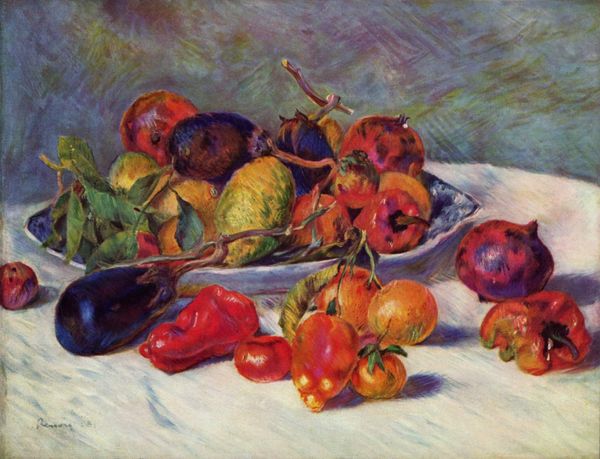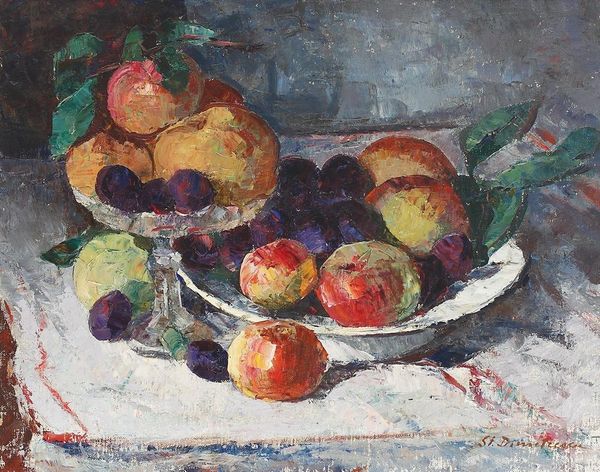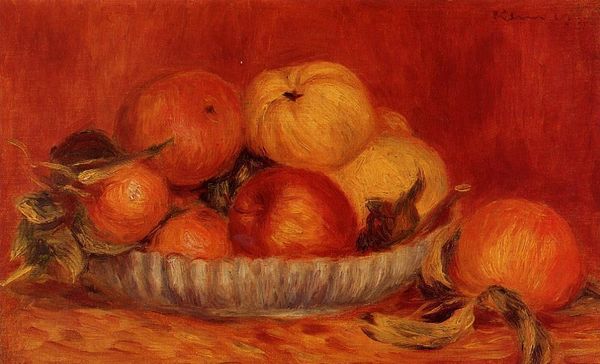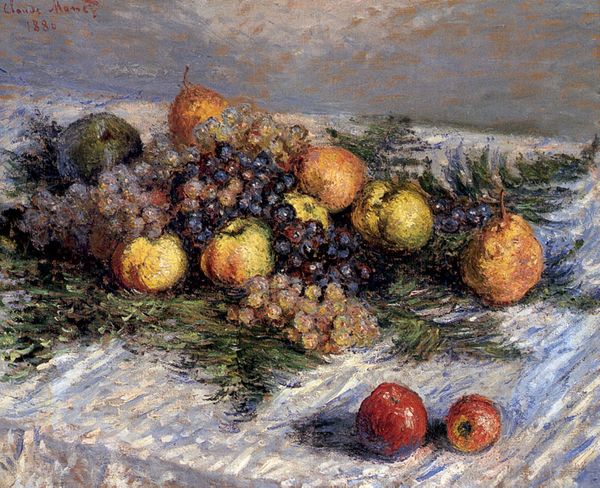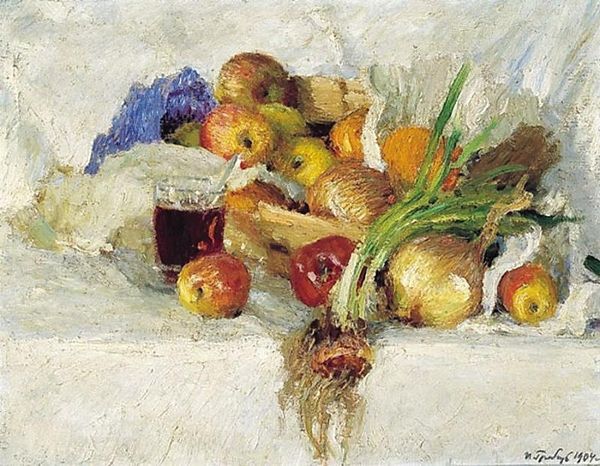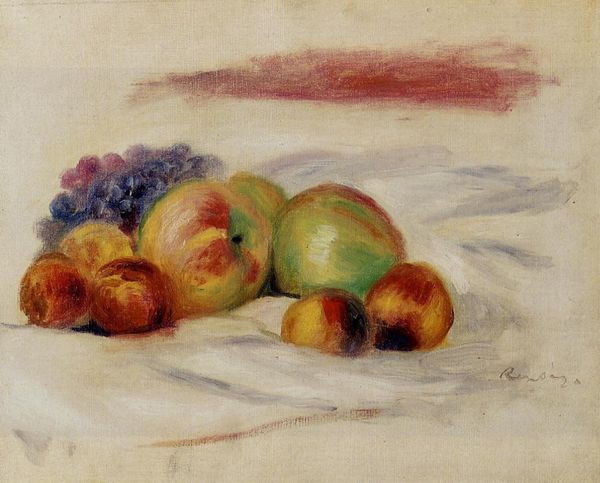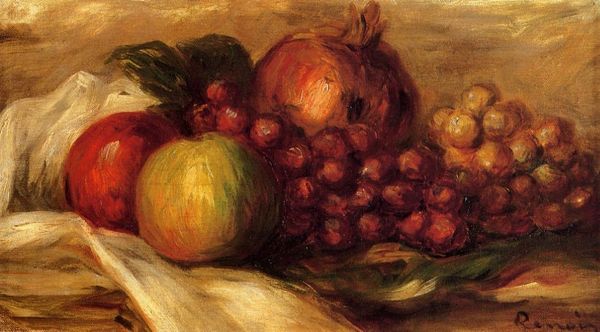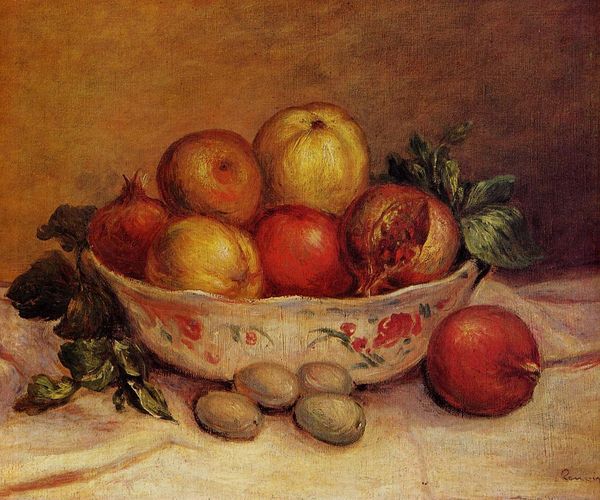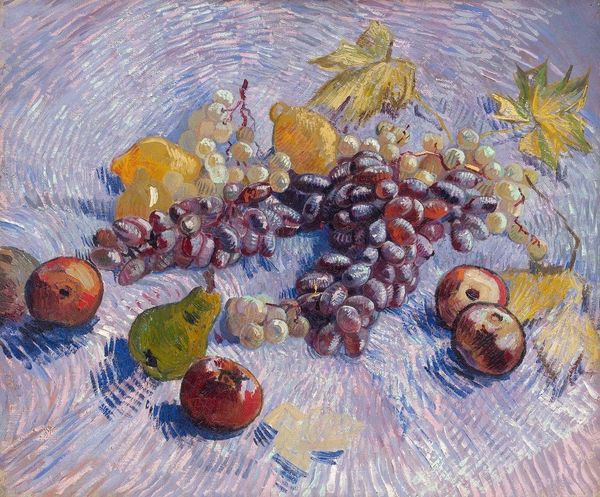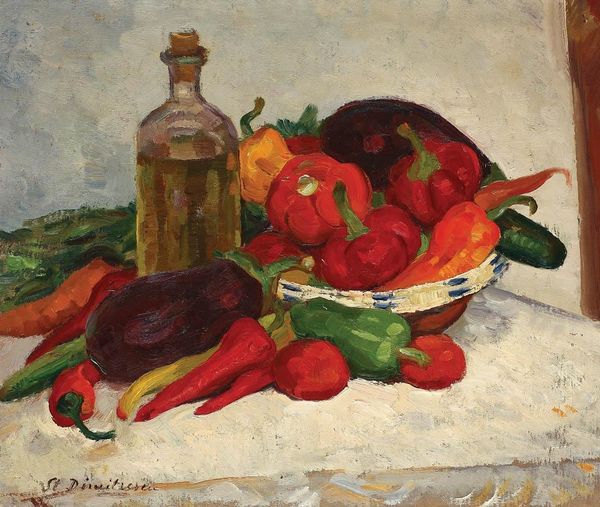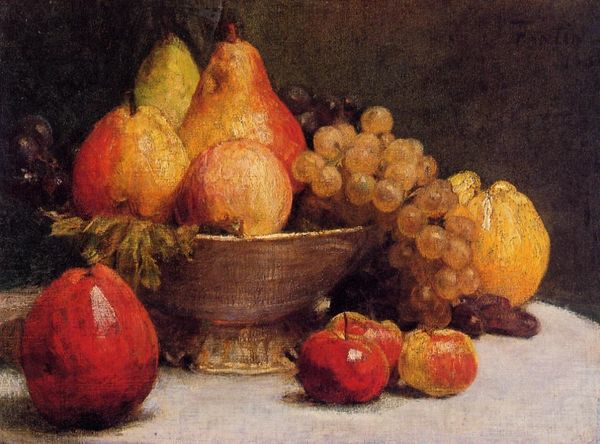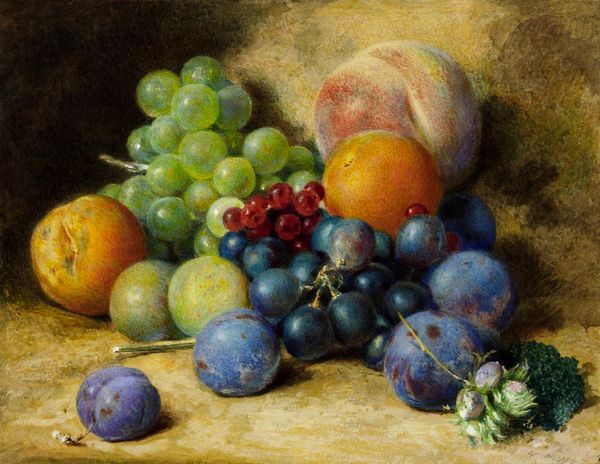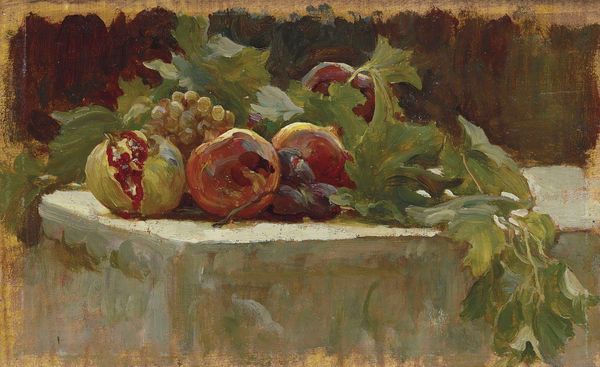
painting, oil-paint
#
painting
#
impressionism
#
oil-paint
#
genre-painting
#
realism
Copyright: Public Domain: Artvee
Curator: The textures just vibrate on the canvas, don’t they? It's a real feast for the eyes. Editor: Indeed. This oil painting, known as "Fruits of the Midi," was rendered by Pierre-Auguste Renoir in 1881. Immediately, the interplay of light and color jumps out. What do you make of the composition? Curator: The profusion suggests abundance and perhaps even a slight disarray, the items casually presented on the surface hint at the transient joys of summer. Look closely and the chosen elements might hold a deeper meaning. The round fruits especially, historically a signifier of completion, a return to the point of origin. Editor: I’m more intrigued by Renoir's brushstrokes themselves. See how they're loose and broken, allowing the colors to blend in the viewer's eye, not necessarily on the palette? The visible brushwork emphasizes the painting’s surface, disrupting the illusion of depth to flatten the pictorial space. Curator: I see how that impacts the perception, shifting the focus from pure representation to symbolic intent. Remember, fruit as a symbol appears across eras. In Christianity, a symbol of temptation, rebirth or the wages of good works. But this looks more worldly, almost Bacchanalian! Editor: Perhaps Renoir aimed to simply capture the essence of light on form? Notice the almost imperceptible shift in hues as the light grazes the rounded surfaces of the fruits, and shadows subtly caress them. A sophisticated manipulation of color relationships, wouldn't you say? Curator: Maybe, but I still see in the composition's density a deeper celebration of sensory pleasure and the earthly bounty that the Midi region represents. The symbolism gives extra weight to Renoir's project, don’t you think? Editor: I would lean toward emphasis on his visual approach. Still, viewing Renoir's "Fruits of the Midi" is an immersion in sensory impressions and the formal elements of visual construction—that's what sticks with me. Curator: And to me it’s a conversation with symbolism throughout history. An interpretation of what fruits can suggest in an evolving social context. Both things can exist, I think.
Comments
No comments
Be the first to comment and join the conversation on the ultimate creative platform.
